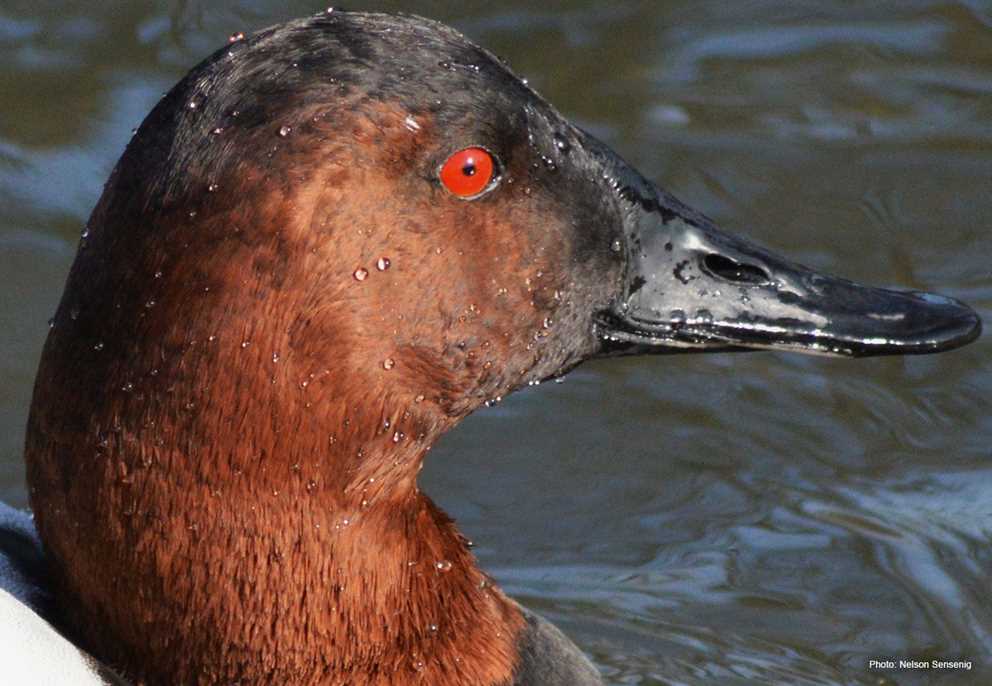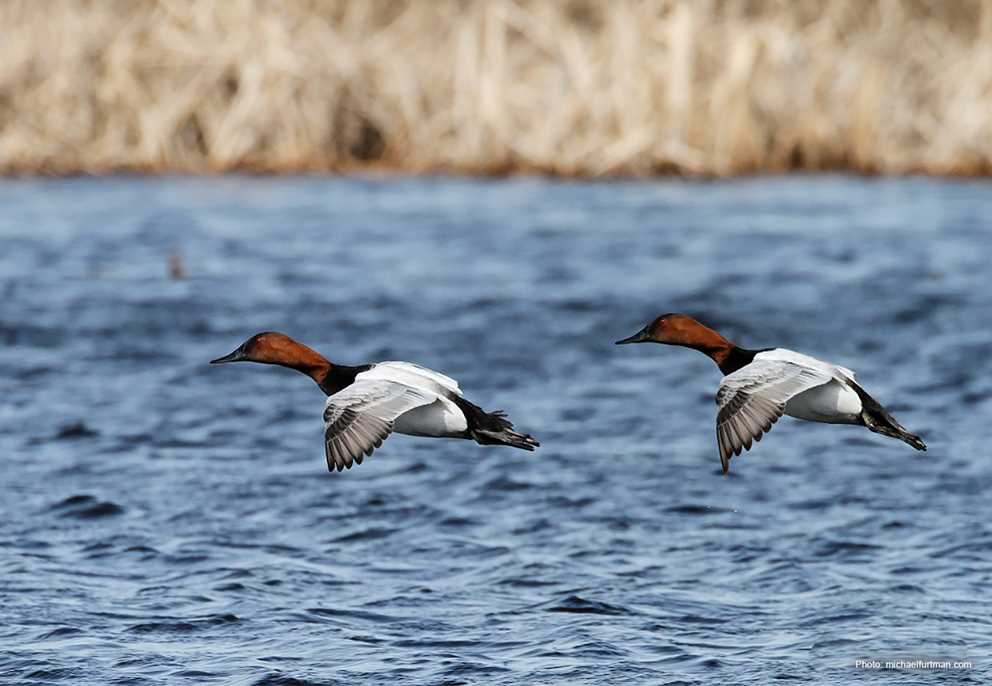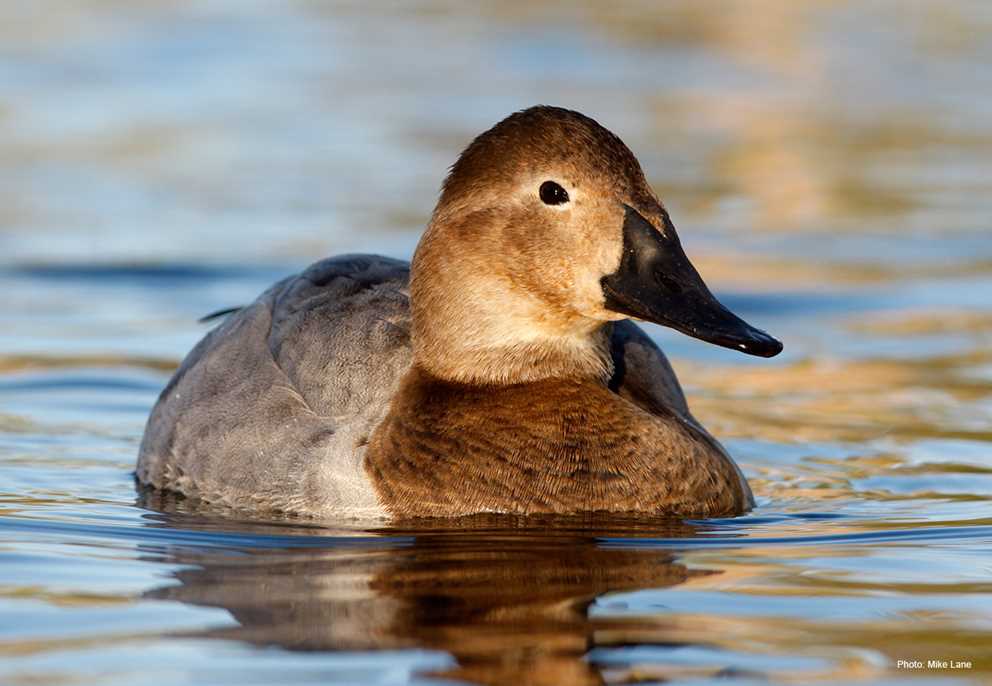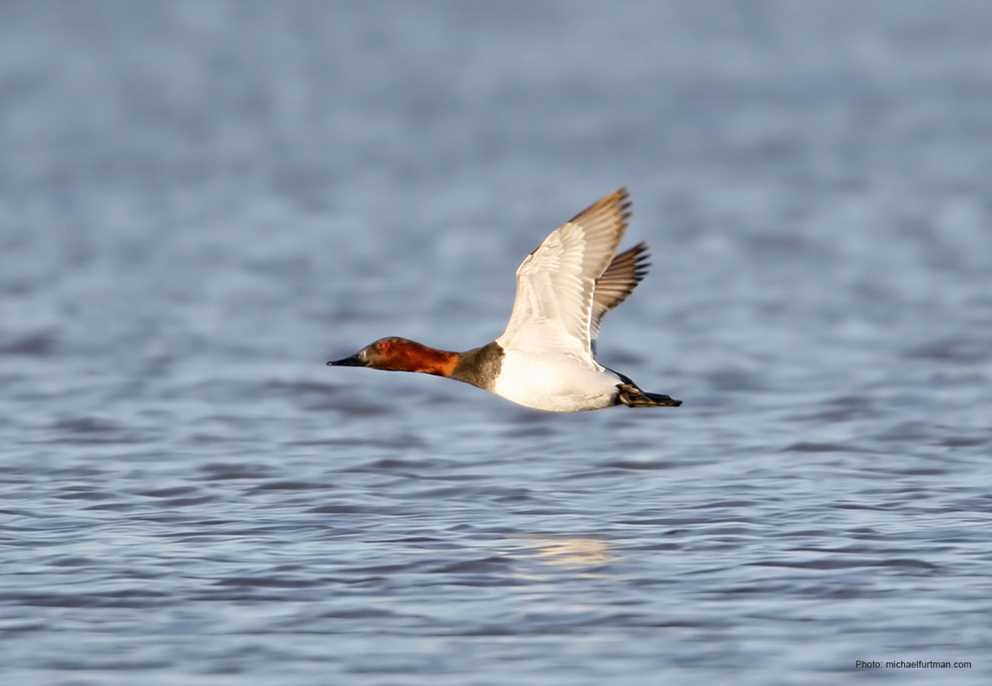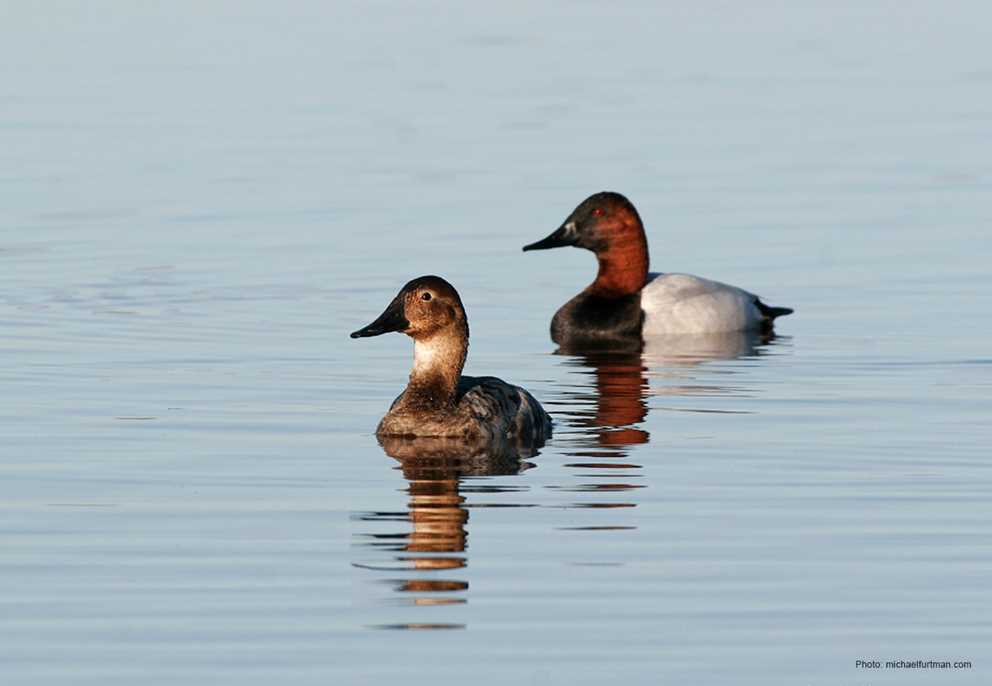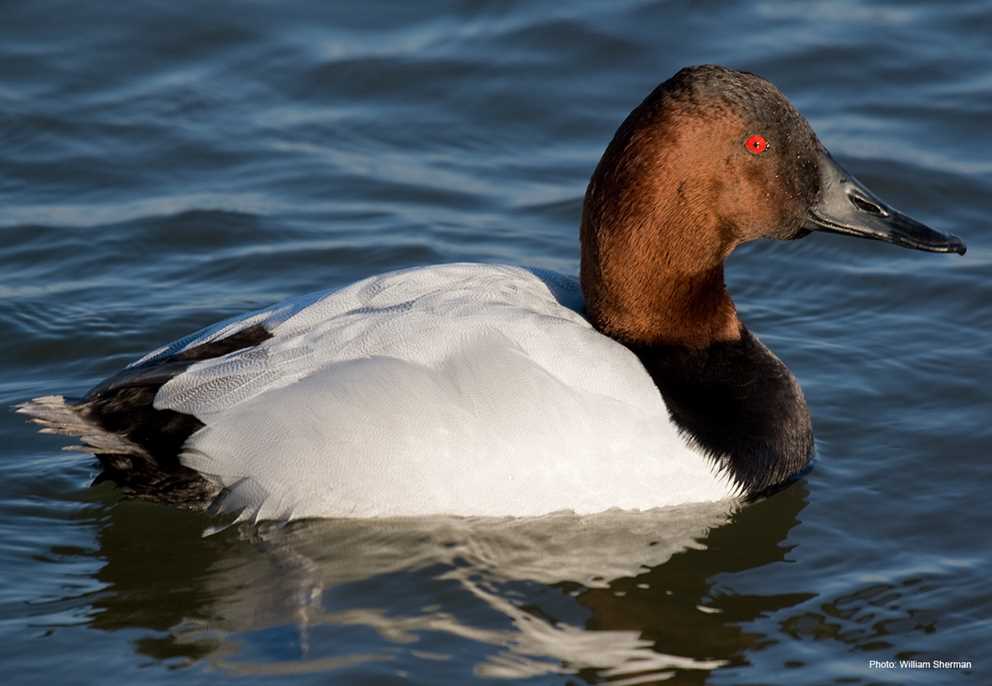Overview
The Canvasback is a large diving duck found only in North America. Males are distinguished by a chestnut-red head, long sloping black bill, and black breast and rump. The back and sides appear white with fine silver-gray vermiculation, while the belly is white. Females are brownish-gray with a lighter, buffy brown head and white belly feathers. In flight, both sexes display a long, straight neck—males show white back and upper wings, while females appear more drab brown.
Canvasbacks breed predominantly in freshwater wetlands in western Canada and Alaska. They migrate to large freshwater lakes, rivers, and coastal bays, including the Great Lakes, where they spend several months during winter. Their primary breeding landscape is the U.S. and Canadian Prairie Pothole Region.
Description
Key Identification Features:
-
In flight, Canvasbacks have a slender appearance, a sloped forehead, and relatively deep wing strokes.
-
Males show chestnut-red head, black bill, black breast, and white back and wings.
-
Females are drab brown with mottled plumage.
-
Both sexes display a long, straight neck.
Male/Female Average Length and Weight
- Mass: Males 2.9 –3.3 lbs.; Females 2.7 –3.0 lbs.
- Wing Length: Males 9.0 –10.5 in.; Females 8.8 –9.0 in.
Male Identification:
-
Breeding Plumage: Males have a black head, neck, and breast, with iridescent tones of blue, purple, or green depending on the light. The head may appear peaked, though this can be inconsistent. Their pale blue bill features a black nail, and their iris is yellow to golden. The back and sides are white with black/gray vermiculation, and the belly is white.
-
Basic Plumage: Dull brownish-gray with a dull gray-blue bill, typically attained in summer (July/August) during molt.
Female Identification:
-
Females are shades of brown with a white patch at the base of their blue-gray bill that has the same black nail as males. Unlike ringnecks, they have no white ring on the bill itself. Both breeding and basic plumages are similar, though the white patch may be less noticeable in the basic plumage. Females also have white belly feathers.
In-Flight Identification:
-
Male: In flight, males have a black head, neck and breast; head may show iridescent tones of dark blue, purple, or green depending on angle of light. They display a bold white stripe on their secondary feathers, which does not extend into the primaries.
-
Female: Darker brown heads with lighter brown neck and white belly feathers. Similar to males, females also show the white stripe on secondary feathers during flight.
Vocalizations:
-
Males are typically quiet but may give a “whee-oooo” call during courtship.
-
Females emit a purring “b-r-r-r-r-rp” in flight and a harsh “scauuup” as an alarm call.
Similar Species:
-
Greater Scaup: Greater Scaup show a rounder, larger head, a wider bill, and a white stripe extending into the primary feathers in flight.
-
Ring-necked Duck: Ringneck males have more uniform black back and uniquely patterned white on flanks. Male and female ringnecks have a prominent black tip and white ring on the bill in contrast to the nearly uniform bluish bill in lesser scaup.
Habitat Preferences
- Breeding: Canvasbacks use deep, permanent to semi-permanent wetlands in the Prairie Pothole Region and boreal forest.
- Migration and Wintering: They favor large water bodies such as the Great Lakes, rivers, coastal bays, and nearshore marine habitats.
Foraging Habits and Diet
- Breeding Season: Females primarily consume protein-rich invertebrates, particularly aquatic insect larvae, to fuel egg formation and replacement of feathers during molt. Males eat a combination of aquatic insects and plant material, including roots and tubers of aquatic plants.
- Migration and Winter: Their diet shifts heavily to plant materials including like tubers from wild celery, pondweed, and duck potato. In some important wintering areas where poor water quality has caused a decline in favored plant foods, Canvasbacks will feed heavily on mussels.
Breeding Habits
- Monogamy: Canvasbacks are seasonally monogamous, forming new pair bonds each year, usually during spring migration.
- Nest Locations: Females build platform nests in dense emergent vegetation, like cattail or bulrush, on relatively small, deep wetlands, especially those in the Prairie Pothole Region.
- Clutch Size: Typically 6 to –8 eggs, grayish-olive to greenish-drab, measuring 2.5 by 1.8 in.~62.8 x by 44.5 mm. Average incubation is around25 days (range 24 to –29 days).
Migration & Distribution
- Fall Migration: Canvasbacks leave breeding areas in October or November, migrating in large flocks. They arrive at wintering areas beginning in mid-November, with peak numbers from mid-December to February.
- Spring Migration: Migration begins in February, with birds reaching breeding areas from mid-April to mid-May. Key spring staging areas include the Great Lakes and navigation pools of the Upper Mississippi River.
Conservation Status
- IUCN Status: Least Concern
- Population Status: The breeding population has fluctuated between 373,000 and 865,000 since the 1970s, with Waterfowl Population Status, 2024 estimates at approximately ~566,000, consistent with the long-term average.
- Conservation Concerns: The primary threats include wetland loss in the Prairie Pothole Region and reduced water quality, which impacts plant food availability, at important migration and wintering sites.
- Conservation Focus: Conservation efforts focus on protecting and restoring breeding, migration, and winter habitats, particularly protecting intact prairie wetlands and improving water quality to support aquatic vegetation.
Harvest Information
- An average of 75,088 Canvasbacks were harvested per season across the US during the 2019 through 2022 hunting seasons.
- Canvasback harvest is typically highest in the Mississippi Flyway, accounting for 30 to 40 percent of the total US harvest.
- The top three harvest states for Canvasbacks across the 2019 –2022 hunting seasons were California (55,717), North Dakota (33,425), and Louisiana (28,458).

